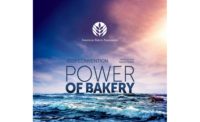American Bakers Association unveils in-depth study on Gen Z consumers habits, millennial perceptions of baked goods

American Baker’s Association (ABA) has released the American Bakers Association 2019 Study: Attracting Gen Z and Millennial Customers which reveals the habits, perceptions, and relationship of Millennial and Gen Z consumers toward commercially baked goods. The results not only show these consumer segments’ perceptions of health, purchase drivers, and digital experiences related to bakery but also indicate key trends for all consumer packaged goods companies to consider.
“Understanding these consumers is of paramount interest to all business sectors, not just bakery,” said Robb MacKie, president and CEO of ABA.
“Millennials are now the trend drivers in the baked goods category,” said Jason Dorsey, president of the Center for Generational Kinetics and the report’s author. “This is true from grocery stores to food service. Accurately uncovering, understanding, and explaining Millennials at this critical time in their consumer evolution will help to drive the growth of the baked goods category and bust through myths about the generation. The study not only exposed surprising insights but also revealed that baked goods have a promising future with Millennials as their spending and influence is poised to only increase.
The report takes a deep dive into key verticals for the baking industry including bread, sweet baked goods, tortillas, rolls & buns, crackers, baked bars, bagels, and flatbreads.
Millennial and Gen Z love for baked goods is alive and well
Most (78 percent) of Gen Z and Millennials eat carbs in their regular diet. Many (73 percent) have purchased bread in the last week, and 63% purchased a sweet baked good in the past week. Millennial and Gen Z consumers have positive nutritional associations with many types of baked goods. Further, the majority (75 percent) of younger consumers are not dissuaded from consuming baked goods because of a concern about carbohydrates.
“This new national research comes at a critical time for the baking industry,” said Robb MacKie, president and CEO of ABA. “It uncovers generationally relevant decision factors that drive baked goods choices, shopping preferences, and triggers that influence trying new products.
Food waste is a big issue for Gen Z and Millennials
Even though these consumers still enjoy and buy baked goods, they are purchasing and eating less than the previous year. The study found that when it comes to bread, in particular, food waste is the main concern that inhibits purchases. Nearly three quarters of consumers are bothered by wasting bread and having to throw away bread deters future purchases. Additionally, the study found that more than 1 in 5 consumers often or always skip buying bread on their next trip to the store after throwing bread away.
“The study shows some potential answers for the baking industry,” said Robb MacKie, president and CEO of ABA. “For example, more than half of those surveyed would buy more baked items if they came in smaller portions. This report details even more strategies for businesses to consider when looking to develop products for these consumers.
Attracting Gen Z and Millennial Consumers
Across all product categories, Gen Z and Millennials in the study say the most important nutritional descriptors for baked goods are “whole grains,” “freshness,” and “natural ingredients.” Many (48 percent) would also be convinced to try a company’s goods if the ingredients were responsibly sourced. They want to see more baked goods in meal kits, potentially purchased in a physical grocery store – a vast majority of Millennials and Gen Z consumers still prefer to shop for baked goods at a traditional grocery store.
“An interesting report finding shows that tasting is believing,” said Robb MacKie, president and CEO of ABA. “One-third of these consumers would buy more baked goods if they could taste them first.
The American Bakers Association 2019 Study: Attracting Gen Z and Millennial Customers was conducted by the Center for Generational Kinetics. It was funded by the American Bakers Association as a resource for its members.
The link to access the report can be found by clicking here.
Looking for a reprint of this article?
From high-res PDFs to custom plaques, order your copy today!





